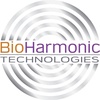The photo bio modulation laser are a recent innovation that has drawn a lot of attention in the constantly changing field of healthcare and wellness technologies. Low-level light therapy is a novel treatment that stimulates cellular processes. It has attracted the attention of medical professionals, researchers, and individuals due to its many applications and advantages.
It's crucial to understand the beginnings and development of this revolutionary technology in order to completely comprehend the significance of photo bio modulation laser.
The Beginnings of Photo Bio Modulation
The origins of photobiomodulation can be found in the seminal studies on the effects of low-level laser therapy (LLLT) carried out by eminent scientist Dr. Endre Mester in the 1960s. Mester's research opened the door for the development of photobio modulation by examining how low-intensity light can promote cellular regeneration and repair.
The scientific community initially viewed the idea of using light to affect biological processes with skepticism, as they struggled to understand how photons could be used to cause observable physiological changes. But Mester's tenacious investigation and convincing results gradually changed the scientific paradigm, paving the way for additional study and breakthroughs in this area.
The Evolution of Photo Bio Modulation Laser Technology
More advanced laser systems were developed as a result of scientists' and engineers' continued refinement of photobio modulation technology. These cutting-edge gadgets were made to emit particular light wavelengths that were intended to target particular cellular functions and medical uses.
The development of photo bio modulation laser saw the introduction of diode lasers as a significant turning point. Healthcare professionals and the general public now have greater access to this technology thanks to its widespread adoption and affordability, which was made possible by these light sources' compactness, efficiency, and affordability.
Furthermore, our knowledge of the fundamental mechanisms underlying photobiomodulation has only grown. Scholars have explored the complex interactions that exist between light, cellular signaling pathways, and the body's inherent healing mechanisms. They have discovered the nuanced ways in which photobiomodulation affects tissue regeneration and cellular function.
Modern Applications of Photo Bio Modulation Lasers
Today, photo bio modulation laser are revolutionizing the way we treat a wide range of conditions and ailments by finding applications in a variety of healthcare and wellness domains.
The fields of pain management and rehabilitation are among the most well-known applications. Photobio modulation lasers have proven to be effective in reducing pain and inflammation brought on by arthritis, musculoskeletal injuries, and other long-term illnesses. These lasers can aid in pain relief, increased mobility, and quicker healing by promoting cellular repair and regulating the body's inflammatory response.
In the fields of tissue regeneration and wound healing, photo bio modulation laser have also made significant strides. It has been demonstrated that targeted light therapy improves the body's natural healing processes by encouraging the formation of new blood vessels, fibroblast proliferation, and collagen synthesis—all essential steps in the wound healing cascade.
Photo bio modulation laser are used for skin rejuvenation and aesthetic medicine in addition to their therapeutic applications. Because light-based treatments stimulate collagen production and improve skin tone and texture, they have been used to address a range of skin concerns, including acne, scarring, and signs of aging.
Recent studies have looked into the potential of photobiomodulation lasers in the treatment of neurological conditions and cognitive enhancement. Targeted light therapy may be able to modify brain function, according to preliminary research, opening up new treatment options for disorders like depression, traumatic brain injury, and even neurodegenerative diseases.
The Future of Photo Bio Modulation Laser Technology
The potential uses for this technology are anticipated to grow even larger as our understanding of photobiomodulation advances scientifically. Scholars and trailblazers are consistently investigating novel approaches to leverage the potential of light to enhance human health and overall welfare.
Integration of photo bio modulation laser with other complementary therapies, including acupuncture, virtual reality, and physical rehabilitation, is one area of particular interest. Healthcare practitioners can develop more individualized and holistic treatment plans that are suited to the particular requirements of each patient by combining these modalities.
Furthermore, the continued progress in laser technology, which includes the creation of increasingly sophisticated and small devices, is expected to raise the cost and accessibility of photobiomodulation treatments, opening them up to a wider range of people.
As we look to the future, it is evident that photo bio modulation laser have come a long way from their modest origins to their current position as a game-changing medical technology. The potential to completely change how we address different health and wellness issues is still unlimited as long as researchers, physicians, and people themselves keep delving deeper into and utilizing the benefits of light-based therapies.

No comments yet